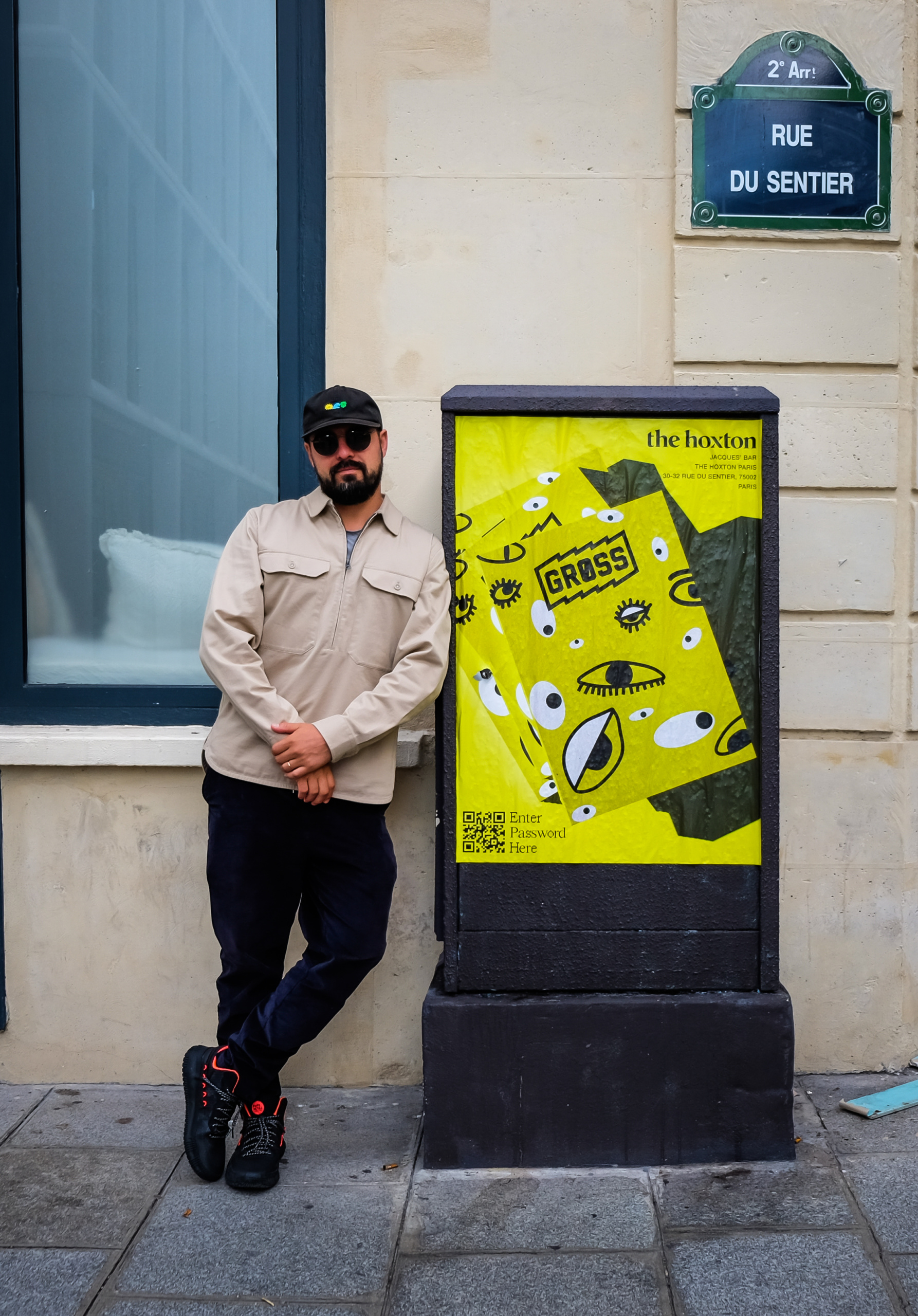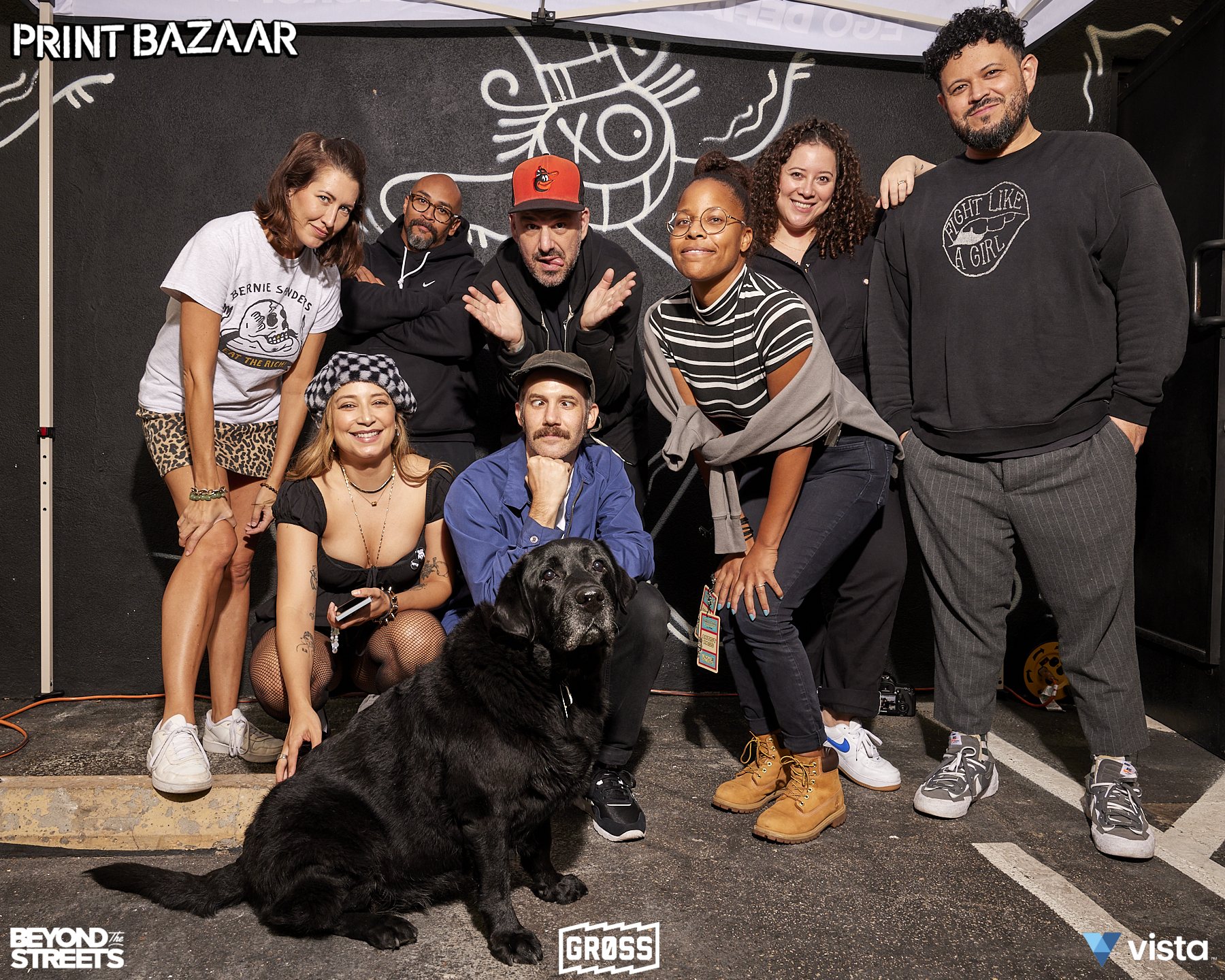A SAUCY ITINERARY OF ARTFUL RESTLESSNESS... CONTINUED

FRIDAY OCTOBER 21
We were pumped so many of our VOL. 4 artists were showing and attending Paris+, including the ever-lovely Andy Dixon’s latest solo show, PATRON’S HOMES, at OTI’s new Paris location located across from the President of France’s home.
Love Andy.
Love the show.
“This new series of paintings is a culmination of Dixon’s decades-long practice that encapsulates the artist’s uniquely vibrant and gothic-pastel palette with adept technical skill, rooted in vast art historical knowledge. The 16 paintings in this exhibition each feature previous paintings from the artist’s “Masterpiece series” ~ Venus ad Adonis, Bacchius, ONE MORE, TWO MORE.. each “Masterpiece” was photographed then repainted in their current spaces, their PATRON’S HOMES.”
Images courtesy Julien Pépy
The last time I visited Paris, I ate a crepe that tasted like hotdog water... Thankfully Christina found MALO, a rooftop creperie on the top of the epic Printemps building (it has 10 domes which is absurd) and le crepe vengeance was had.

After a quick refresh and a futile attempt at working, we went to meet up with some friends at a zesty local spot, Sonny’s Pizza, that exceeded all expectations. You can't go wrong with rad staff and house-made hot honey on fresh pies.
Our litty committee had grown to six people and it was only proper that we take our newcomers to see the spectacle that is Le Comptoir General. Part museum, part pirate ship, and fully entertaining, this bar/venue is like a loft that resembles a nautical theme park. Highly recommended.

As if we had a shortage of beverages, we ended the night making new friends over a crisp round of conversations and cocktails at the beautifully designed Gravity Bar before clocking out for the night.
3am? Need sleep.

Image courtesy of Gravity Bar
SATURDAY OCTOBER 22
Stoked to meet up with our Amsterdam team Luna and Greg who landed the night before. Day two of Paris+ commenced and the carousing began.
After running into LA-based art dealer Leonardo Ledesma, we scooter ganged over to Salon 94 Design, catching the closing of 53 Miles West of Venus, a group show featuring F Taylor Colantonio.
This rigorous schedule demands constant refueling. Arrive at one of the more highly anticipated restaurants in Paris, Frenchie Wine Bar. Sitting across a cobblestone alley from its more famous Michelin-rated sister restaurant by the same name, the bar du vin offers a more casual avenue to try the incredible food from renowned chef, Greg Marchand. Make sure to show up promptly at 6:30 pm or you won’t get a table. We proceeded to do the most degenerate American thing possible, ordering one of everything on the menu — epically paired with wines selected by, you guessed it, monsieur Stephen.
Leaving the crew to complete the dinner of countless courses, Christina and I saddled up Lime-bike-stye, ripping the streets on our way to Accor Arena. Kendrick Lamar goes on at 9:15 pm draped in black leather and exquisite custom silver belts and harnesses hand-made by Mexican artist Arlette. Kdot slayed hit after hit to a sold-out crowd. Bravo, sir.

Images courtesy Greg Noire
Post-show, it was back on our trusty steeds for a 15-min cycle through town ending at Soho House for some (forgettable) dirty martinis. Maybe next time they’ll have cookies.
SUNDAY OCTOBER 22
After forcing myself to get some work done in the morning, I made my way over to Carette (the epitome of Parisian sidewalk brunch cafe) to meet the rest of the crew. We had the quintessential french onion soup hangover cure and Christina reluctantly ate her first snail which she instantly regretted.
Afterward, we wandered into Mariane Cramer Projects' joint exhibition with Août Gallery and saw a masterpiece featuring none other than the superstar, Bertie the pom. Artists in this exhibition included: Mariah Ferrari, Yann Houri, Mathilda Marque Bouaret, Lotte Keijzer, Juan de la Rica, Jordy van den Nieuwendijk, Nicolas Romero Eversiempre, Jim Mooijekind, Arjen and Arno Beck.
Stopping by to get eyes on Drôle de Monsieur's latest season of elevated streetwear, their storefront felt like a 70’s living room mixed with an elegant gallery space; bold designs popping like art.
Our Parisian correspondent Pierre met us after attending AKAA Fair back at our local spot, Mary Celeste for somehow, more wine.
We walked it off with a healthy stroll to the 11th to hit Clamato, a cool new restaurant from the Septime Family presenting creative seafood dishes. While waiting for our table, we got the royal treatment at La Cave L'Incognito and snuck in a decadent visit to Le Chalet Savoyard — an EPIC cheese restaurant like I’ve never seen before. The fondue and raclette were double doses of dairy debauchery.
We ended the night getting denied entry to SO/ Paris, a Paris+ partner hotel, even with our press passes because the bar closed at 12:15 and we arrived alas, at 12:16. Oh well, it was whatever and the night manager should probably find a new job.
Our 6th and final night had come to an end.
We said au revior to grand Paris the following day, possibly smuggling a checked bag full of cheese.

Join us next year.

































































































































































You must be logged in to post a comment.